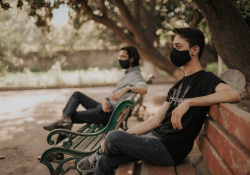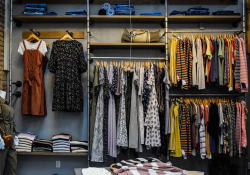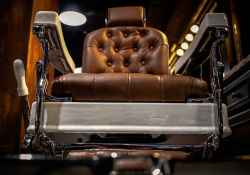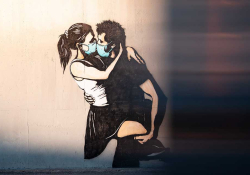Between Poetry and Enchantment: The Sculptures of Italo Lanfredini
Images courtesy of Italo Lanfredini / italolanfredini.it
Invitations
The outside brick wall of La Silenziosa, Italo Lanfredini’s house-studio-open-air-museum near Commessaggio, Italy, features a Wall of Song (Muro del canto). Amidst inscribed terra-cotta tiles, a poem by world-renowned Italian jazz musician Giorgio Gaslini greets the visitor at the gate:
Concerto All’Aperto
Il dolce maestro ispirato
concerta i virtuosi del creato
lasciate le sale affollate
di metropoli acculturate.
Sorride evocando armonie,
intreccia del vento le polifonie
e infine da’ il ria alla solo
del gaio e sottile usignolo
Outdoor Concert
The sweet master inspires a concerto
and the virtuosos of creation
leave the cultured metropolis’
overcrowded haunts.
Smiling he dreams of harmonies,
of the wind’s intricate polyphonies
and in the end he gives the solo song
of the gay and delicate nightingale.
In Librino, on the eastern coast of Sicily, another wall greets passersby. The “Gate of Beauty” (Porta della Bellezza) is a 120-square-meter terra-cotta installation made in 2008–2009 with contributions from the children of Librano; it adorns the sides and top of an underpass with a terra-cotta “veneer” inscribed with poems, signs, phrases, numbers, and drawings. Such are the artist’s invitations into his world.
Inside of La Silenziosa, everything bears the mark of the artist’s hands, from the home that he rehabbed to the studio that he lovingly fashioned from the stables of this eighteenth-century building, to the 15,000-square-meter campus. In twenty-three years, he has planted 1,500 tamarind, plum, and mirabelle trees, hawthorns, oaks, maples, walnut, mulberry, and cherry trees, grapes, and ginkgo bilobas, and replaced Dutch-elm-diseased trees. He has orchestrated the campus into a sculpture parc. A Google Earth view of La Silenziosa shows several structures, including The Great Diameter (Il Grande Raggio), Earth’s Earth, or the Garden of the Soul (Terra della terra o Giardino dell’anima), Origins (Origine), The Nest (I nidi), The Matrix of Seeds (Grembo del Seme), and The Moveable Forest (Foresta Impugnabile). In his studio are found objects, reclaimed wood, terra-cotta works in progress, and handmade paper.
Lanfredini is physically involved in his creative work from start to finish. Sculpture is a dialogue between his medium and his hands; he considers the hands as the extension of the brain. The mark of hands on a work of art captures the instant of creation. Practicing strength and control, the hands affirm the humanity of the sculpture and the closeness between nature and product. A playful affirmation of being, this is hard work that brings creation and destruction close together. In the words of a fellow sculptor, Fausto Melotti, “the artist plays, and through the fury of playing, peels his hands.”
Sculpture is a dialogue between his medium and his hands; he considers the hands as the extension of the brain. The mark of hands on a work of art captures the instant of creation.
The Poetics of Space
In order to better see a future sculpture, Lanfredini listens to the aura of the place where it is to be located; from its sounds and colors, moods and sensations, he divines what is not yet there and what he will reveal through his space-symbols. Each of his sculptures is purposefully placed in space to invite a voyage through time and imagination; it becomes a crossroad of cultural and human experiences, a poetic object representing a moment in time and culture, yet containing the memory of its original form. Determinedly antimodernist, Lanfredini reclaims the centrality and specificity of space and unites earth and sky with nature and time. Such a concept is heavily influenced by Gaston Bachelard’s poetics of space, and its inside/outside, open/closed constructs. These binary paradigms and their subconscious “negatives” allow almost endless connections between geometric/logical space and natural space. In that sense, Lanfredini is doing for space what Alan Lightman did for time in Einstein’s Dreams: he opens infinite combinations of shapes, spaces, and distances.
Lanfredini is doing for space what Alan Lightman did for time in Einstein’s Dreams: he opens infinite combinations of shapes, spaces, and distances.
The “organic-looking” quality of his works anchors them to their space and makes them look as if they have always been in that particular place. Like Bachelard, Lanfredini privileges creations that reveal “fundamental images” and archetypes—thresholds, circles, stairs, boats, nests, eggs, fences, forests, gates, and labyrinths—that he fills with personal, contemporary content while evoking the origin of creation. In the 1970s he favored matrices that reflected on joining-separating, on the primal space that creates light, vibration, song, and thought. During this time, he realized the series Encounters at the Fountain of Life (Incontri e Fonte di Vita), The Gods (Gli Dei), Venus (Le Veneri), and Broken Columns (Le Colonne squarciate).
In the mid-1970s, Lanfredini’s sculptures acquired a broader dimension and began to relate more closely to their surrounding spaces. Privileging interactive artworks that dialogued with the places where they were placed, he made places of transit and erring such as thresholds, labyrinths, gates, and gardens that were designed to be crossed and experienced. His most famous work of the 1980s is Ariadne’s Labyrinth (Labirinto di Arianna), which was selected by the International Competition of Sculptures promoted by Antonio Presti, the creator of the Fiumara d’Arte open-air museum on the northern coast of Sicily in Catana. There, in 1988–1989, on the high cape of the Nebrodi Mountains, above the village of Castel di Lucio, Lanfredini painted and burnished cement. The labyrinth’s meditative impact has inspired documentaries by Italian state television RAI and the European channel Arte since 1989. The Chilean producer Raul Ruiz filmed in it a part of his surrealistic movie The Clandestine Journey: Lives of Saints and Sinners. By associating himself with this project, Lanfredini affirmed his desire to heal the land and reclaim a forsaken area of Sicily, even if it meant becoming part of a controversial project that only after twenty-five years of court battles was recently recognized as a national artistic treasure.
Lanfredini’s labyrinths are in part inspired by Mantua’s Ducal Palace, a maze of five hundred rooms. They resonate with Polish poet Wisława Szymborska and Argentine poet Jorge Luis Borges. For Szymborska, labyrinths are a metaphor for life’s halting progress into the unknown amidst bewildering possibilities. Borges’ concept of “magic realism” (i.e., the juxtaposition of realist daily ordinary scenes and fantastical, nightmarish, or supernatural evocations related to myths and fairy tales) suggested to him the possibility of representing what is and what could be through unfamiliar ruptures and passages.
Lanfredini’s sculptures are less a finished product to be contemplated than an aesthetic narrative possessing a “dynamic orientation” and furthering the creative process. They are nonobjective, nonmonumental, and noncommemorative. They are made to be entered, crossed, examined, and traversed; each viewer prolongs the creative process with his/her own interpretation when interacting with the sculpture physically, emotionally, and spiritually. Sites of exchange, meeting, and reflection, Lanfredini’s sculptures become sacred poetic vessels; he is reluctant to explain them lest his words interfere with the viewer’s spontaneous, playful experience. The work of the artist and that of the viewer “must be done with passion and love without ever losing the desire to play.” In this way, art gives a voice to space and objects that have no voice; art generates words and words generate poetry.
Lanfredini’s sculptures are made to be entered, crossed, examined, and traversed; each viewer prolongs the creative process with his/her own interpretation when interacting with the sculpture physically, emotionally, and spiritually.
Sculpture and Poetry
Thirty years ago, Lanfredini began associating poetry more directly to his sculptures, starting with The Sieve (La Scernita), in 1992–1993. The title of the sculpture is borrowed from a lunette by Giulio Romano in the famous room of Love and Psyche in Mantua’s Palazzo del Te, and more specifically from a fresco representing a young woman preparing to sift wheat. Lanfredini made 2,500 small terra-cotta sculptures of varied shapes and laid them on both sides of a large terra-cotta sieve (more than 120cm in diameter) whose upright position adds a playful commentary about the capricious nature of selection and choice, time, and the mental process of ordering the world.
In 1993 Lanfredini put together a book to accompany his artwork. He sought renowned poets as well as kindergarteners from two elementary schools, because they are free from preconceived ideas. By encouraging this multigenerational encounter, he intersected past, present, and future. Each text is handwritten. Entirely handmade and to this day unpublished, the book is “a work within the work.” Its cardboard cover features a terra-cotta insert. The book’s 115 pages contain forty-eight poems, including one by pedagogue Mario Lodi, fifteen of Lanfredini’s own drawings, and texts by over one hundred children.
There Is Breaking and Breaking
There are those who kill themselves with effort
to look for gold in the rock
and silver and other similar things
(Giobatta and Piero for example).
Lucky is he who can
build a palace or mansion
all gold and silver;
you enjoy servants and women, in the end you die:
it doesn’t matter how
it doesn’t matter when
but he also collapses dumb,
the lucky rich man.
But I wanted to tell you that I rank
the land of my vegetable garden, and when
I find a fragment of plate or bowl
I am happy because I think
it has not been used in passing
by my ancestors, and my father and mother.
I’ve found a lot of pieces,
and these are my treasure
and my gold.
I too will die, I too will break;
but there’s dying and dying
breaking and breaking:
mine are
the real sun and the real gold.
Umberto Bellintani (1974)
Sculpture, Poetry, and Music
The alliance between music, poetry, and sculpture is a trademark of Lanfredini’s mature work. Poetry for him has its roots in nature and in the dawn of humankind, as birdsongs were an inspiration for the human voice. He always returns in spirit to the origins of the poetic word. Listening has always been very important to him. Whether nature’s breath, birdsong, human speech or jazz, classical music, pop, or cantautorale, sound helps him decipher space and give his work its tempo. Sounds, but also silence, for those who listen, see. The musical pieces accompanying his works are often written for that specific work; they are a part of a sculpture and, like poetry, create an additional space for reflection and imagination. The first work accompanied by music was The Sieve. This practice continued with the “piroga” series that characterizes his recent work. Not unlike the Bantu people of Africa or the Native Americans of North America, he carved canoes out of tree trunks, in his case centenary elms that had succumbed to Dutch-elm-disease. This caused one of the participants to his newest project, poet Stuart Dybek, to liken the piroga to “a boat that has floated hidden for years within the tree.”
The first piroga, called The Cradle of the Wind (Culla del vento), was made in 1992/93. A canoe carved from a single tree trunk rests atop a wooden ladder. In it are thirty-seven terra-cotta tiles inscribed with texts by writers, musicians, philosophers, and poets. These texts are given to posterity, to be revealed only after Lanfredini’s death. The secret acts as an imagination-trigger, as it projects the viewer into the future and encourages a reflection on the imperfectability of knowledge. A second canoe, The Boat of Precious Essences: Verses to Pour – Whistles to Dream, is located in the deconsecrated fifteenth-century church of San Pietro in Gazzuolo. The work was presented by the poet Alberto Cappi, who enlisted several Italian and international poets. The piroga rests on a bed of wood chips, which give off the sound of water when walked upon; located in the nave, it carries thirty-six terra-cotta vases, each containing a poem, and eighty whistles dedicated to children. In both works, the echoes of invisible words and sounds bring about a sense of mystery and reinforces the invisible presence of the sacred.
The pirogas provide multisensorial experiences. Passing through a sculpture means to smell the wood and terra-cotta as well as the ambient air, to touch part of the sculpture by walking across it, to see different angles and lighting, to read or imagine the poems, and to listen to the music, silence, or the wind. More importantly, the pirogas displace sensorial habits: walking on wood chips mimics the sound of sea waves; the touch of the wind transports the mind into infinite distances and time dimensions; hidden poetic messages induce the frustration of deferred pleasure and inaccessibility, creating a counterpoint with the apparent closeness of the sculpture; liquid sustenance meant to be carried in small amphoras becomes words to be poured; poems calligraphed on paper become sails; a breakable sieve lies upright, useless, protected by the objects it is supposed to sort out; and patinated concrete imitates petrified wood or terra-cotta. In the end, nothing is as it seems. Thus playfully “recycled” in a first degree of playful transmutation, Lanfredini’s materials transpose reality from the familiar to the unfamiliar. They invert the use of objects; the reachable becomes unreachable. An imbalance that negates knowledge is created, forcing a return to the source, the divine the origin of thought and word, the vibration, the fissure from whence springs the light.
An imbalance that negates knowledge is created, forcing a return to the source, the divine the origin of thought and word, the vibration, the fissure from whence springs the light.
Lanfredini’s current work-in-progress, The Canoe (Piroga), is a metaphorical bottle afloat in the sea. Carved from a centenary poplar trunk, it features in its center a “jewel case” containing poems on the theme of sea and love. Once installed on fifty to sixty square meters of wood chips sculpted from the tree trunk, the piroga will “travel” to the four corners of the globe on these “waves” with the help of “sails” formed by the poems strung from the piroga. Lanfredini explains:
The reason for my Piroga and the poets from all possible latitudes of the world is because the poetic word or “overword” has no borders or barriers. Poetry becomes a pretext for union and sharing in multiple languages, all tending to respect the sacrality of places and all beings.
Lanfredini’s initial goal was to have chosen poets travel to La Silenziosa, “play” with the sculpture, and calligraphy their poems on the 30 x 40cm sheets of handmade paper. Playfulness here again is essential. Of one of the poets, Japanese writer Shizue Ogawa, Lanfredini says: “She demonstrates a great mastery in grasping the aura of the place and at the same time enjoying it with her beloved. The lover always looks with the eyes of the beloved.” Summing up the playfulness, passion, and love that are the essential ingredients of her poem, he concludes, “All this I call truth, and truth is beauty.”
The pandemic made it impossible for poets to travel to La Silenziosa. Instead, poets have been emailing the scans of their handwritten texts to Lanfredini, who reproduces them on his special paper. To date, about fifty poets from all the continents are participating—more than a dozen European countries, poets from North and South America, from East Asia and the Pacific (Japan, China, India, Australia), and the Middle East / North Africa (Israel, Egypt, Saudi Arabia). Composers Domenico Clapasson and Claudio Cristani are writing musical pieces. The pandemic delayed completion of his work, which was initially planned for January 2021. All poems and music featured in the piroga must remain unpublished until after the initial exhibition, which hopefully will take place later this year in Mantua, then eventually travel to the poets’ countries.
Even in its unfinished stage, the piroga has provoked an interesting exchange about sustainability. Australian poet John Kinsella, who wrote a poem for it, asked Lanfredini for permission to use their email correspondence for the book he is currently writing with Russell West-Pavlov, professor of comparative Global South cultural and literary studies in Australia, Africa, and the Caribbean. Entitled Per Se: The Imperatives of Place II (Narr, forthcoming), the book discusses the poetics of space and time and their transformation in the contemporary world. Kinsella and West-Pavlov contrast Lanfredini’s approach with that of Oslo’s Future Library project, for which one thousand Norwegian pines were felled in 2014 in order to build a safe room aiming at conserving one hundred literary works to be published in 2114 on paper made from one thousand new pines planted to replace the primeval forest.
Writing to Lanfredini in a private email in December 2020, West-Pavlov praised him for “the way in which that [project] participates actively in an ethos of sustainability and natural regenerativity.” He further qualified Lanfredini’s sculpture as one of “elemental sustenance, connective travel, and unitary design [that] speaks volumes in a world of rising sea levels, refugee drownings, and immense bush- and forest-fires destroying the world’s forests.” Borrowing from the Per Se manuscript, West-Pavlov added that “the ‘arks’ that Lanfredini builds, quite literally full-sized pirogues hewn out of fallen trees, designed to carry a cargo of poetic texts, speak in their own distinctive language to an age of sylvanacide and ecocide, rising sea levels, and refugee drownings all over the world. The tree, living on in its natural trajectory of growth, decay, and sustenance, speaks a temporality not of hiatus or hubris, but of holding (not merely in the archival sense), care, nurture and regeneration.”
Transformational Essentialism
Open spaces are another notable part of Lanfredini’s work. The Lost Wanderer Threshold is a large oak and elm sculpture realized in 2012 (350 x 270 x 216cm). Reminiscent of his labyrinths, this sculpture is a fulcrum of life’s choices, each threshold opening a host of possibilities, each leading into memory or into the unknown. There is no poetry or music, just the stark collusion of past and future, of lost and found, a collusion that strips one of all illusions.
The sculpture entitled Three Axes (400 x 550 x 350cm), made of elm in 2014–2015, is perhaps Lanfredini’s most minimalist creation. It consists of three wood beams resting on each other in an ephemeral yet durable balance that evokes eternity and infinity, bridges earth and cosmos, and stops time, mind, and soul. Its ability to merge physical and mental spaces and to delineate a space that is both open and closed produces inner silence, distance, and meditation. Evoking the virtuosic counterpoint of J. S. Bach or jazz’s bold improvisations, the sculpture awakens the senses and the mind; its sobriety “recenters” the soul and reconnects it with nature and with its own voice. Three Axes evokes a coming and going through time and space, delineates a linear motion of existence from the beginnings of time, song, and speech, into the far future.
There is more than a recycled quality to Lanfredini’s treatment of materials. Art critic Marina Travagliati compares his art, its multitude of signs, weights, traces, footprints, and writings, to “givers of the flame of light.” Primeval forms of expression, these are often reclaimed from ancient traces, tree resin, old stones, or burnt wood that Lanfredini tracks with the passion of an archaeologist or a paleontologist to inscribe them in the great matrix of human creativity, like fifteenth-century Italian artists or such twentieth-century artists as Brancusi, Klee, and Giacometti. Whether healing, recycling, or giving voice to the voiceless and making the invisible visible, he fulfills his mission as caretaker of creation, dignifies castaway, forgotten, or overlooked objects, gives them a new life, and sends them into the world to testify to authenticity, truth, and beauty.
Whether healing, recycling, or giving voice to the voiceless and making the invisible visible, Lanfredini fulfills his mission as caretaker of creation, dignifies castaway, forgotten, or overlooked objects, gives them a new life, and sends them into the world to testify to authenticity, truth, and beauty.
In his preface to the book for The Sieve, Lanfredini reveals not only his inspiration for the sculpture but his role as an artist:
My walks on the sands of the Po with its implacable fords and nests. My spasmodic collection of “precious carryovers”: pebbles, wood, bones, iron, glass, lumps, and stones. Surrendered to the water and resurfacing over and over again. Shaped by water and air, baked by the August sun. Choked by sand and debris on flood days and again rolled and nicked by wind and time. How great is the beauty of these little in-forms and their power of attraction! I am but the “sum-subtraction” of Being. The confirmation of what Friedrich Nietzsche said: “Because everything is interconnected, wanting to exclude anything excludes everything.” I am one of those “carryovers . . .”
Brief Biography
Born in Sabbioneta in 1948, Italo Lanfredini has lived in Lombardy all his life. He credits his father, a self-taught artist, for his teenage passion for sculpting. He began his studies under Algano Seguri and Aldo Bergonzoni at the Giulio Romano Art Institute in Mantua, then at the Beaux Arts Academy in Florence. In Milan, he attended Luciano Minguzzi’s course on sculpture and Guido Ballo’s lectures on the history of art at the Brera Academy, working in the atelier of Francesco Somaini before establishing his own studio. He returned to Mantua in the early 1970s and taught plastic and visual education at the Giulio Romano Art Liceum for the next thirty-five years.
Since 1997, Lanfredini has lived near Commessaggio, west of Mantua and south of Lake Garda. He purchased an eighteenth-century “cathedral on the verge of collapse,” named it “The Silent” (La Silenziosa) and made it into a permanent art atelier and open museum, which is open from the first day of spring until October. Claiming the estate’s stables as his atelier, he populated it with sketches of his work and a bestiary of dogs, cats, and chickens made of drift- or reclaimed wood.
Always a teacher, Lanfredini defines himself as a teacher and a learner. In 2003 he taught a course on environmental art at the University of Mantua; he continues to teach university-level seminars at Brera Academy, Urbino University, Catana Polytechnic School, as well as in multiple art institutes and high schools. He frequently hosts popular art seminars at La Silenziosa for student of all grade levels from area schools. He promotes plays, concerts, children’s games, and is closely associated with the World Poetry Academy and its journal, PLANETA Poesia. Working outside the art market since 1998, he has been nationally and internationally exhibited.
University of Tennessee Martin
Editorial note: To view a portfolio of Lanfredini’s work from the 1970s to the present, visit his website.
Bibliography
Claudio Cerritelli, I. L. Luoghi (2008).
Marina Travagliati, I. L. Signs of Light (2011).




















